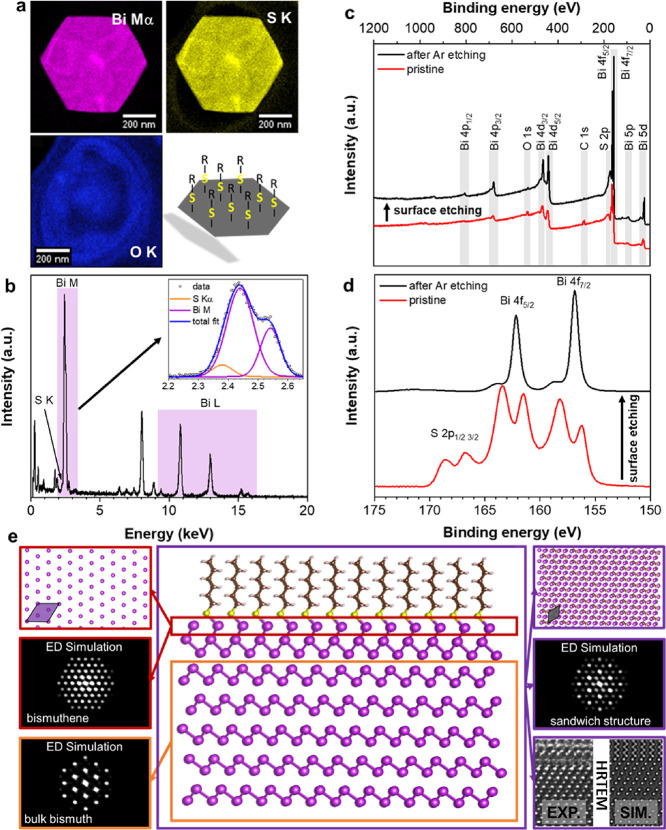Figure 2.
Surface composition and hybrid structural model. (a) Integrated scanning transmission electron microscopy energy-dispersive X-ray spectroscopy (STEM-EDX) intensity for the Bi-Mα, S-K, and O-K signals for individual crystallite with artistic representation of the functionalized material. (b) Spatially integrated mean EDX spectrum with signals related to Bi indicated. Additional peaks can be ascribed to stray radiation from the sample support and holder. The inset shows a close-up of the energy range between 2.2 and 2.7 keV, with a fitting of the minute sulfur contribution resulting from the functionalized surface. (c) Overview X-ray photoemission spectroscopy (XPS) spectrum before (red) and after (black) surface etching with Ar ions and (d) high-resolution XPS of S/Bi binding energy range. A clear indication of S 2p before the surface etching can be noticed between 165 and 170 eV (detailed fit of individual contributions in Supplementary Figures 5 and 6). (e) Structurally optimized bismuth/bismuthene hybrid with simulated electron diffraction patterns from the indicated regions. The bottom right panel shows a cross-sectional HRTEM image and the respective image simulation by a multislice approach. Cross section prepared by FIB milling (Supplementary Figure 9). Additional cross-sections and detailed analyses can be found in Supplementary Figure 10.

